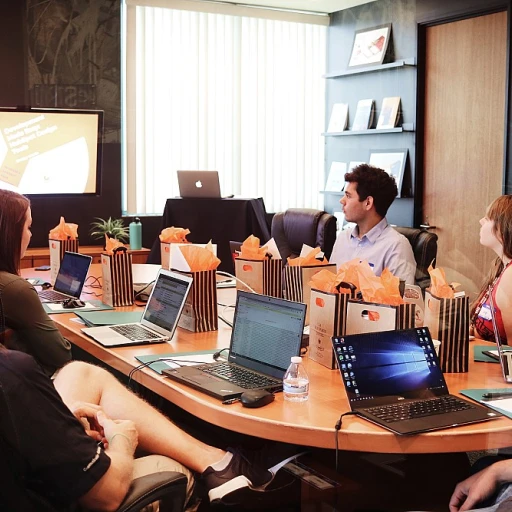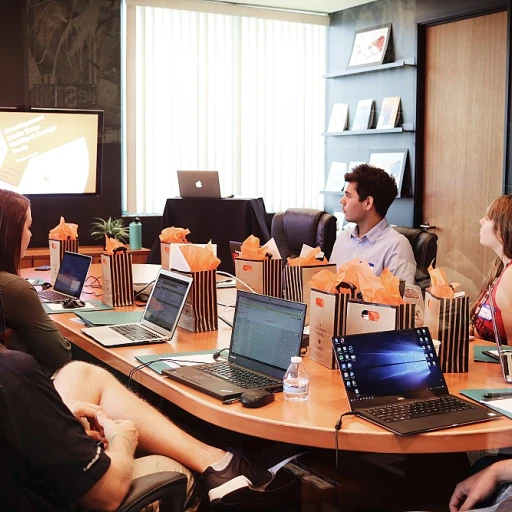
Understanding Your Audience
Grasping the Essence of Your Target
In any reskilling initiative, understanding your audience is the cornerstone of effective communication. Although it seems straightforward, this is where many efforts falter. The challenge lies not only in defining who the message is for but also in discerning their unique characteristics, challenges, and preferences. Whether you are communicating with employees, students, or any specific group, taking time to learn more about your audience's background and experiences will help tailor your message effectively.
- Identify the Demographics: Delve into the age, professional roles, and even the industry of your audience. This knowledge will guide you in setting the appropriate tone and language for your message.
- Understand the Needs: Ask questions and employ surveys to gather data about what reskilling paths the audience is most interested in, and how they prefer to receive these communications.
- Engage with their Motivations: Craft messages that resonate with their personal goals and professional aspirations. This connection makes your communication more engaging and substantive.
- Identify the Existing Skills: Recognize the skill level of your audience to ensure that the messages more align with their current competencies, making your communication strategy clear concise.
Assuring your message audience is seen and heard enhances engagement and fosters effective communication. By paying attention to their demands and preferences, your strategies can drive impressive response rates. To dive deeper into bridging communication gaps within various groups, check our article on navigating cross-departmental reskilling. This will provide insights that can aid in developing a more targeted communication approach in your continuing education plans.
Crafting Clear and Concise Messages
Developing Effective Communication Strategies
Crafting clear and concise messages is essential in capturing and maintaining the attention of your audience. In the realm of reskilling, these messages must be tailored to effectively reach and resonate with diverse groups, from students seeking more information to seasoned professionals exploring continuing education options. To achieve this, focus on the following strategies:- Define Your Main Points: Before creating any message, make sure your key points are well-defined. This will help in structuring your message more cohesively, ensuring that your audience doesn't lose interest.
- Tailor Your Tone: The tone of your message should match the expectations of your audience. A formal tone may suit a professional setting, while a more engaging and conversational tone can attract younger audiences.
- Prioritize Clarity: Clear communication is at the heart of effective engagement. Avoid jargon that your audience might find confusing. Instead, use simple language that makes your message accessible to all.
- Craft Attention-Grabbing Introductions: An effective communication strategy begins with an engaging introduction. Capture their interest from the start, and they will be more inclined to learn more about what you offer.
Incorporating Storytelling
Tips for Making Ideas Stick Through Storytelling
Incorporating storytelling into your communication strategy can significantly enhance engagement within your reskilling initiatives. Stories have a unique power to grab the audience's attention and make complex ideas more accessible. This approach aligns with effective communication principles by transforming clear and concise messages into narratives that resonate.
One way to craft more engaging messages is to focus on the audience. Understand what is relevant to them and utilize stories that connect emotionally. People usually remember stories better than isolated facts, which helps them learn more about the main points you want to make.
To make your message more engaging, follow these tips:
- Create relatable characters: Use characters that your audience can identify with. This helps in creating a personal connection and enhances understanding of your story.
- Show, don’t tell: Instead of simply stating facts, demonstrate them through a vivid narrative. This will make your audience visualize the message more clearly.
- Keep it real: Ground your stories in real-life scenarios and outcomes. Authentic stories build trust and credibility, which are crucial for effective communication.
- Start with a hook: Begin your story with something that captures interest—an intriguing fact or a thought-provoking question can make sure people don’t stray from the message.
Integrating storytelling into your reskilling communications can also serve as a call to action. Add a clear end goal or lesson to your story to guide the audience toward understanding the significance of reskilling and their role in it.
Remember, the ultimate goal of storytelling in reskilling communications is not just to inform but to engage. By converting messages into relatable and compelling narratives, you increase the response rates and enhance the overall communication experience. Exploring accelerated development programs can offer more insight into crafting these narratives effectively.
Utilizing Visuals and Multimedia
Visuals and Multimedia: A Dynamic Boost to Your Messages
Incorporating visuals and multimedia into your reskilling communications can significantly elevate engagement levels. In today's fast-paced world, grabbing the audience's attention is essential. People don’t have time to sift through lengthy texts; visuals and multimedia can make information more digestible. By integrating various formats, you can cater to different learning styles and make your communication strategy more effective. For starters, using infographics can help distill complex concepts into clear, concise messages. Infographics serve as a visual representation of your main points, making it easier for students and the broader audience to grasp the information quickly. Don't underestimate the power of illustrations to make a message more memorable. Videos are another powerful tool to engage more audiences. A well-crafted video can enhance storytelling, breathing life into your message and making it relatable. This can help in creating an emotional connection, which boosts engagement and can lead to higher response rates. Slideshows and webinars can also be used to reach people who prefer interactive and visual content over text. This form of multimedia allows you to incorporate a clear, concise narrative with visuals to support your communication goals. Remember to make sure each visual element aligns with your communication tone and message audience. When used wisely, visuals and multimedia don’t just make your communications more engaging; they also amplify the message, helping your audience to learn more and retain information effectively. Your efforts in creating visually appealing content will help you maintain the audience's focus and interest, paving the way for successful reskilling initiatives.Interactive and Personalized Content
Making Engagement Personal and Interactive
In the vibrant world of reskilling communications, making your message more interactive and personal can significantly increase engagement. Understanding that each audience has unique needs and perspectives allows you to tailor your communication strategy effectively. Here are some insights to help make your messages more engaging:- Personalized Content: When you personalize the message for your audience, you create a direct connection that encourages them to pay attention. Consider using names, preferences, or previous interactions to make the content more relevant. This personal touch will help students and professionals alike feel valued and understood.
- Encourage Participation: Inviting your audience to participate actively in the communication process can enhance engagement. This could be through polls, quizzes, or open-ended questions, all designed to make people feel that their opinions matter. An engaging call to action can prompt immediate responses and increase interaction times.
- Use of Interactive Tools: Utilizing digital tools and platforms that offer interactive experiences can further pique interest. Whether through webinars, virtual workshops, or interactive videos, these mediums make your message more dynamic and impactful.
- Continuous Feedback: Encourage audiences to provide feedback and show that you are listening. This will not only enhance your communication skills but also make sure your message aligns with their needs. Regularly updated content based on feedback demonstrates adaptability and commitment to effective communication.
Feedback and Continuous Improvement
Gathering Feedback for Enhanced Engagement
To truly enhance engagement in reskilling communications, collecting feedback from your audience is pivotal. Engaging with people to understand their perspectives not only strengthens your connection but also helps adapt your communication strategy. This feedback loop is essential for adapting your message to meet the specific needs of diverse audiences, like students and continuing education participants.
When gathering feedback, make sure to focus on clarity and ensuring that your communication skills effectively resonate with your audience. Consider incorporating surveys, interactive discussions, or even simple polls to gain insights on what people find more engaging. This approach helps in refining the main points of your messages, making them more concise and likely to capture attention.
Effective feedback mechanisms will also assist in determining the tone and content that leads to higher engagement. It might be beneficial to ask open-ended questions that encourage your audience to share their thoughts freely. By doing so, you help foster a strong sense of involvement, making your audience feel valued and heard.
Maintaining a dynamic feedback system can also reveal how your storytelling resonates, ensuring the narratives crafted are not only engaging but also relatable. Keeping audiences engaged with personalized content is more likely when their responses are actively considered in future communications.
Incorporate a call to action in communications to solicit feedback and drive interaction. This not only boosts response rates but also makes your engagement strategy more proactive. Remember, the ultimate goal is to learn more about your audience’s preferences, and using their input to continually refine your communication strategy will help achieve this objective efficiently.













